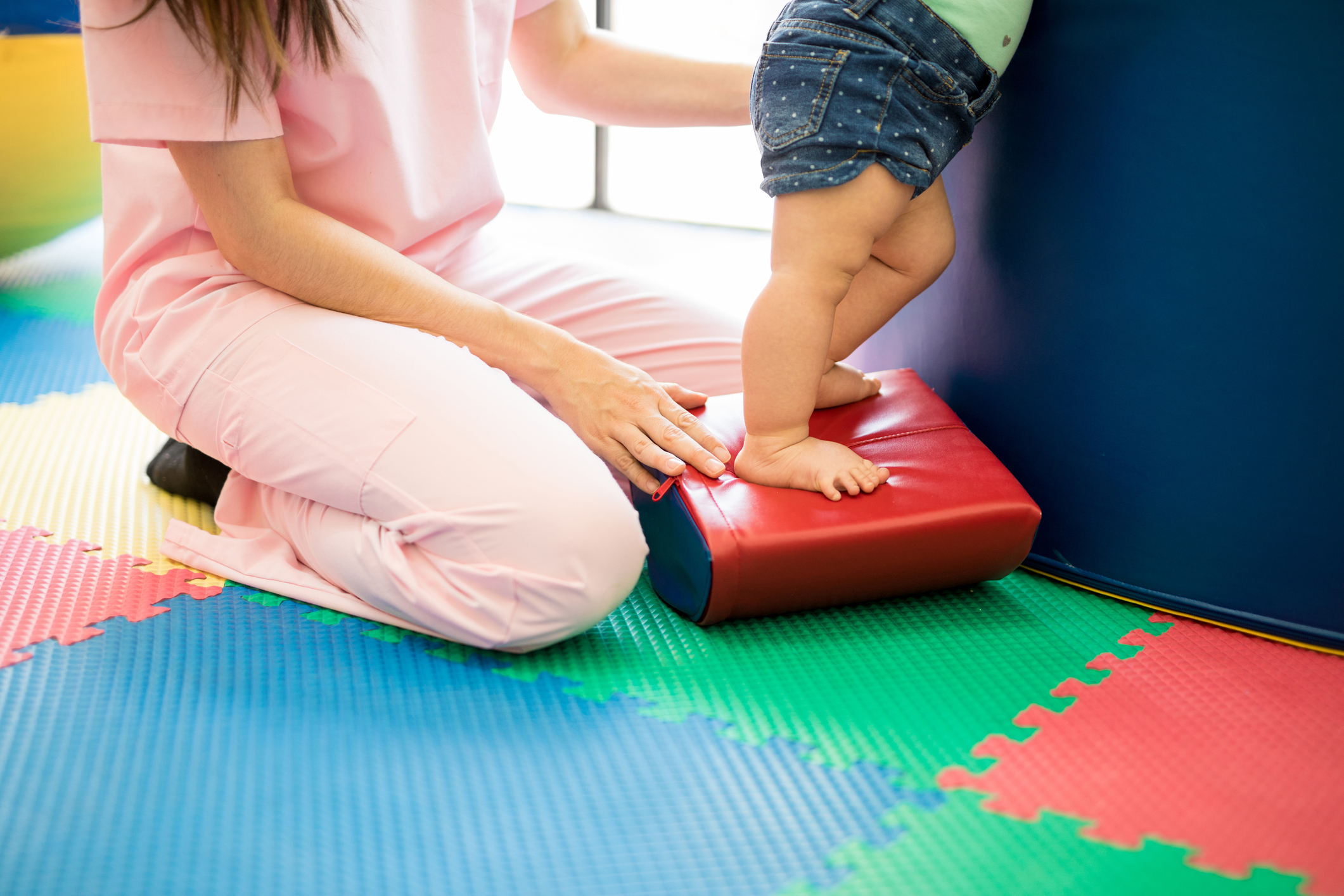When you think of physical therapy you might think of an injured athlete, someone recovering from surgery, or someone with a chronic medical problem. We are here to let you know that you should think of kids, too. Physical therapists are trained to work with patients of any age. Some even specialize in pediatrics. Here are a few things physical therapists can help kids with:
COORDINATION DISORDERS AND GROSS MOTOR DELAYS
Some children are delayed in hitting their gross motor milestones – things like sitting up on their own, rolling, standing, walking, jumping and running. Other children show difficulty with coordination – activities like hand motions to “wheels on the bus”, feeding themselves with utensils, moving awkwardly or slowly, or even tripping or bumping into things a lot. Physical therapists can help encourage development of gross motor skills and coordination to help these kids get back on track.
This is the most common motor disability in childhood. The symptoms can vary from moving a little awkwardly to being unable to walk and needing assistance for almost all activities. There are also different types – the most common causes stiffness in the muscles, but other types affect control of movements, balance or coordination. No matter the type or severity of cerebral palsy, a physical therapist can help with things like stretching, exercise, bracing, and equipment like a wheelchair if needed.
Torticollis is a postural issue that usually becomes noticeable shortly after birth. Babies with torticollis typically hold their heads tipped one direction and rotated towards the opposite side. This is caused by a tight neck muscle. Research has shown that early referral to a physical therapist is a very effective treatment. The physical therapist usually shows the baby’s caregivers ways to gently stretch the neck, and activities to encourage the baby to move his or her head into a more neutral position.
People do not commonly think of pelvic floor issues in children, but you might be surprised at how common they are. The most common symptom is chronic constipation, but pelvic floor problems can also show up as urinary incontinence, bed wetting, or needing to go to the bathroom frequently. A physical therapist can help with education for the child and their family, exercise, and sometimes even the use of biofeedback to help the child learn to better control their pelvic floor muscles.
Although kids have a list of problems specific to them, do not forget about regular old pain and injuries. Your physical therapist can treat an ankle sprain, painful joint, or athletic injury in a child just like they can an adult.
Sometimes kids and even babies need some help with movement. From now on, when you think of your physical therapist, do not leave kids out of the picture!

